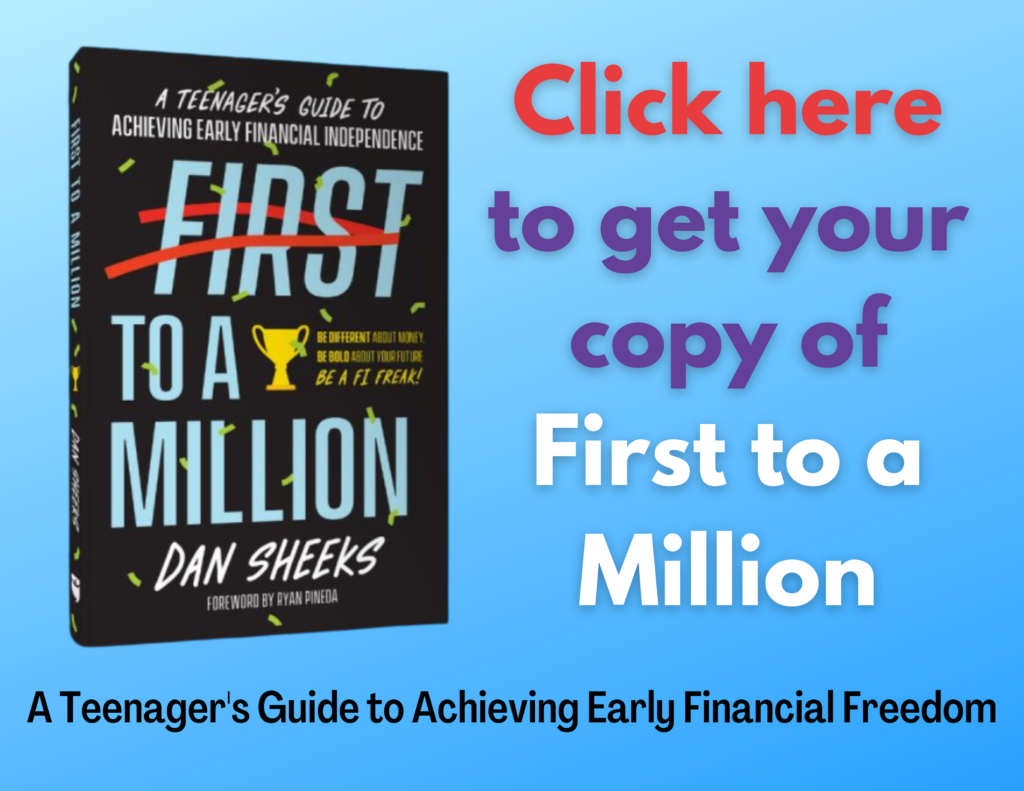by Terry Turner
Let’s face it: investing for beginners can be scary. Well, have no fear, because today we’re going to simplify everything you need to know to get started safely and quickly into three very simple steps.
A lot of one’s fear when beginning to invest stems from being overwhelmed by a sea of information, options, and the occasional horror stories of some people losing big time. Actual investing isn’t hard at all. In fact, in today’s modern world it’s the easiest time in history for a beginner to get started! I only wish I had half the technology and apps that are around today available to me back in 2016 when I started my investing journey at the age of 12-13.
Demystifying Investing for Beginners:
Before I get started with the “how” of this article I want to address some common questions and fears you might have.
Question: Isn’t investing “dangerous”?
Answer: It’s all about your approach. There are extremely risky types of investing (such as using debt, aka margin, to invest more money than you have), but there are also very safe types of investing such as index funds or bonds. Think of it like driving a car: it can be incredibly risky if you’re driving drunk at 100mph on the highway in the dark of night, but if you follow the law and set rules for yourself (like not driving when impaired), then it’s pretty safe.
Question: What if I lose money?
Answer: This is a tricky question to answer, and to be honest I could probably write a 20,000-word article on this question alone. Protecting yourself against losses boils down to two general principles: 1) The type of asset you’re invested in (there’s a big difference between the S&P 500 and Bitcoin), and 2) Controlling your emotions. More on both of these later.
Question: Isn’t it super hard to get started? I don’t want to drive to a bank branch.
Answer: Thankfully, in 2022, it’s never been easier to get started investing! I’ll list some apps below in a moment, but if you already have cash in the bank it will probably take you about 15-30 minutes to go through the entire process of choosing a platform, creating an account, and purchasing your first investment. And you can do it all with just your phone!
Alright, so with a few of those questions out of the way, let’s jump into the “how-to” of this guide!
Related Blog Articles: How to Invest as a Teenager

Step One: Choose a Platform
Besides choosing your investment this is going to be one of the hardest steps in this whole list, simply because there are so many options! For simplicity’s sake, I’m going to list a few of the best options available for different types of beginners:
For Minors (those under the age of 18):
- Bloom (currently iPhone only)
- Stockpile
- Charles Schwab
- Fidelity
For those 18+:
Each of the platforms above could have whole articles dedicated to explaining their individual features, so I won’t dive into that here. Bloom and Stockpile are built with youth in mind and have little to no fees. If neither of those options works for you as a minor, Charles Schwab and Fidelity are both solid contenders, but they’re just not quite as user-friendly.
If you’re 18 or older you have a million options available. I just listed a few of the most popular platforms I could think of off the top of my head. Don’t let analysis paralysis get to you – just pick a platform that looks like it will meet your needs and run with it!

Step Two: Choose Your Strategy
The type of investing strategy you choose will dictate the investments you focus on, to a degree. For example, if you’re a more laid-back type of person and aren’t looking to become the next billionaire ultra-successful modern-day Warren Buffett, then you might choose index funds and some blue-chip stocks. However, if you find that you’re nerding out more about the investing process or simply just have a higher risk tolerance than most, then you might consider investments like crypto and small-cap stocks alongside your other safe bets.
Personally, I am in the latter category. I love all things investing and personal finance so I use a variety of investments. I have part of my portfolio in the S&P 500 as my “safe bet” that I’m going to hold for decades (it’s also in a Roth IRA, or a retirement account). I have a few small mutual funds (similar to indexes) in a regular brokerage account. Lastly, I also have a portion of my portfolio in some cryptocurrencies which is further diversified into several different coins (BTC, ETH, or LTC for my safe bets, and HBAR, XLM, or SHIB for my riskier bets).
You don’t have to limit yourself to just one kind of asset (in fact, it’s better if you don’t). Diversification is key! Just figure out what kind of appetite you have for investing and use that as a guide for the next step of this guide, choosing your investment.
Related Blog Article: The Ultimate Freak Guide to Brilliantly Understanding Your Assets

Step Three: Choose Your Investment
Probably one of the most frequent questions about investing I get from my friends is, “what should I invest in?” The short answer is: it depends. On a lot of things.
I’m fully aware that that isn’t a very helpful answer, so I’ll explain. Unfortunately, it’s impossible for me to “recommend” an investment strategy or specific stock to every person I meet without knowing the details of their particular situation (and besides, I’m not a professional investment advisor). The answer to this section is simply doing your own research! It’s not the quick and easy answer most people are looking for, but it’s the truth. Below are three general tried-and-true principles that can help as you begin researching your first investment:
- Never invest in anything you don’t understand
- Never let your emotions control your investing decisions
- If the “investment” sounds too good to be true, it’s VERY likely too good to be true
While I can’t recommend a specific investment, I can share some of the best or most popular options out there to get some ideas flowing for you.
- Index funds: They’re very underrated! If you’re struggling with analysis paralysis at all, I would strongly recommend considering this option. Don’t let your investing money sit in cash wasting away to inflation! One of the best index fund providers on the market is Vanguard.
- Mutual funds/ETFs: Not all funds are created equal. Do lots of research on all the fees inside the fund you’re considering investing in, as lots of mutual funds are notorious for overcharging for underperformance.
- Bonds: These have been a staple of most investors’ portfolios for decades, however, I haven’t invested in any myself and don’t really recommend them to other young people. As of right now, the returns on most bonds are too low to keep up with inflation.
- Individual stocks: Lots of opportunity here! If you’re starting with individual stocks I would recommend using a buy-and-hold strategy for long-term investing in companies you know will be around for years to come. Generally, the shorter a time frame you try to trade stocks, the harder it is to make money reliably and the easier it is to lose significant amounts of your portfolio.
- Crypto: Arguably the riskier asset class listed here. I probably don’t have to tell you that cryptos are extremely volatile, so caution is necessary! As tempting as it is, I wouldn’t recommend dumping every penny you have into crypto, either. Bitcoin is by far the safest bet out of all the cryptocurrencies, but alt-coins can present some very lucrative opportunities as well. Start small, buy-and-hold, and don’t let your emotions get in the way.
Related Blog Article: Three Proven Ways to Build an Investor Mindset
The Takeaway:
Congrats, you’ve finished this investing for beginners guide! I know how overwhelming it can all be, but I hope this at least helped you get started and begin to wrap your head around it. If you have specific questions or are looking for advice in general, you should read First to a Million by Dan Sheeks and check out the Sheeks Freaks community! I’ve been a part of it for just about a year now and love the community of like-minded peers I have available to me. 🙂 If you want to reach out to me personally, feel free to shoot an email to teenfinancialfreedom@gmail.com. Thanks for reading!



Leave a Reply